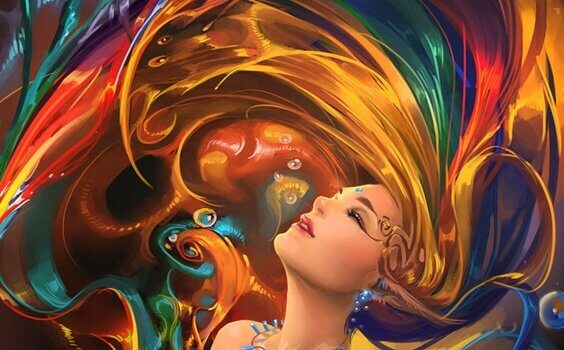Talking about color psychology is about emotions. It is a type of language capable of causing sensations of pleasure, well-being, restlessness or vitality. It is a world that goes beyond the world of marketing and that is often based on personal experiences rooted in our childhood and a psychological symbolism that science has always tried to unravel.
Claude Monet said the world of colors was his daily obsession, his joy and his torment, although it is not easy for an artist to grasp the subtlety of each combination of tones and colors, it is even more difficult to define the impacts they cause. about human beings and their behavior.
- “What is human beings in the face of the colors of the world?Are the colors of the world bigger than man’s feeling?Juan Ramón Jiménez?.
Some people see colors almost as pseudoscience, and there is a bit of truth in that, color has a lot to do with our personal preferences, experiences, education and even cultural differences; However, it should be noted that most interesting of all is that there are many studies that explain how people react to certain colors or which, on average, are the most appreciated.
One of the most interesting books on the subject is Color Psychology: How Do Colors Affect Emotion and Reason?, psychologist, sociologist and communication theory teacher Eva Heller. This interesting work is the result of years of research, studies and observations whose results coincide with many other previous studies and also with the most recent research.
Out of curiosity, we can say that on average, blue color is the most popular.
Color stimulates our brains in different ways, so much so that, in the past, Egyptians and Chinese used the effect of colors to heal, promote certain states of consciousness or promote a particular emotional state, ancient art was also responsible for choosing. For the Egyptians, red was a reflection of life, earth, victory, but also the anger or fury of hostile gods like Seth or Apophis.
In essence, color is much more than an optical phenomenon, all colors have their own meaning, they all create a certain impact on our brain, so color psychology is a basic and essential tool for today’s neuromarketing. Understanding how the consumer reacts to certain colours Stimuli can increase sales and, although their effect is not always 100% foolproof, positive results show that color psychology is very useful.
Nor can we forget the effect of color on the world of art and cinema. David Lynch, for example, is one of the most obsessed filmmakers with the idea of escaping the world of logic and immersing himself in the subtle kaleidoscope of emotions. in his productions he always uses these contrasts between black and white because, for him, they symbolize the flight from the real world to sleep.
“Color is a way of exerting a direct influence on the soul: color is the canvas, the eye is the hammer and the soul is the piano with its strings. “Wassily Kandiski?
Van Gogh also deliberately chose certain shades to express his emotional states, always leaving the brightest shades such as yellow and blue to shape his fields and starry nights.
To immerse ourselves in the psychological universe of each color and the psychology of colors, we will continue to show the studies published by Dr. Eva Heller, as well as the current work of Stanford psychologist and teacher Jennifer Aaker, who recently developed an analysis of interesting colors applied. to the world, neuromarketing.
“There are things of color that come to me while I paint, things that I had not felt before, important and intense things. ” Van Gogh?
In conclusion, it is quite possible that we do not feel identified with these descriptions of color psychology, as we pointed out at the beginning, the impact of each tone depends on our life experiences, however, commercially and artistically, these fundamental principles can be very useful and effective.
In addition, it is known that this list lacks other colors such as brown, gold, silver or gray, we simply describe only the colors that most impact us, those that the world of art and neuromarketing use most often and that, without our knowledge, adorn our lives by influencing us in secret.

